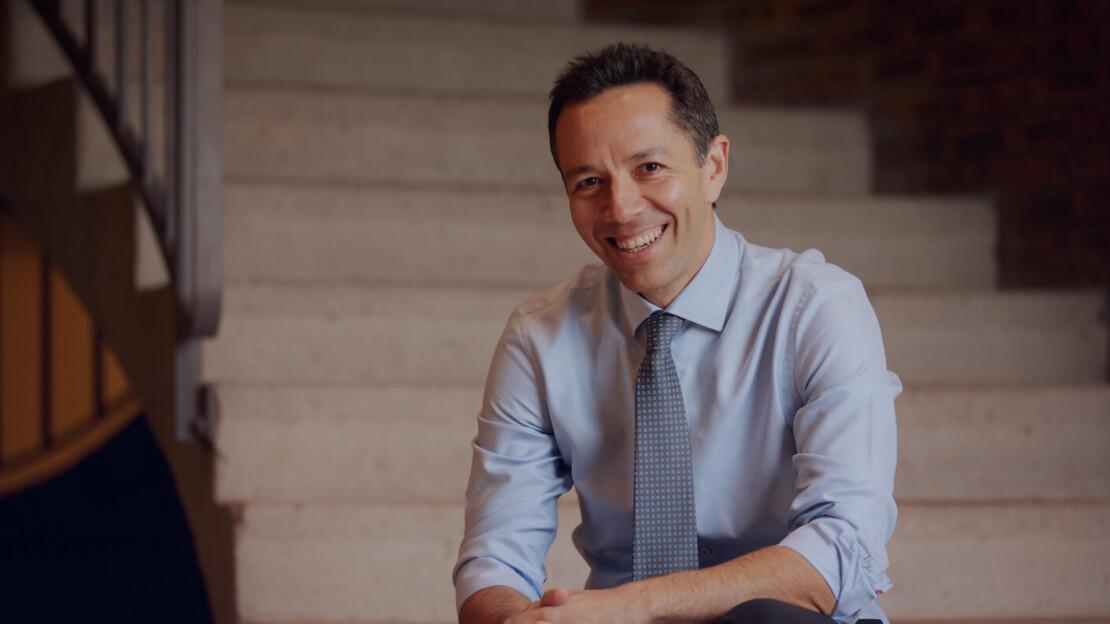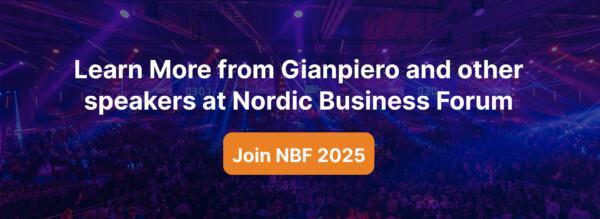16May2025
In a time when AI is transforming how we live, work and lead, it’s easy to lose sight of what makes an organization truly successful: its people and culture. This topic took center stage in a recent webinar hosted we hosted with our friends from Oslo Business Forum, featuring Shane McArdle, CEO of Kongsberg Digital, and Gianpiero Petriglieri, Associate Professor at INSEAD. Together, they tackled one big question: How can leaders keep culture alive and human connection intact in the AI era?
You can also watch the full webinar on our YouTube channel.
Shane McArdle: Embrace the “Brilliant Basics”
Shane opened the session with a clear-eyed look at AI’s impact on the workforce. The stats are sobering—up to 80 million jobs could disappear globally in the next five years. Yet Shane offered a balanced perspective. The future of work isn’t about humans versus machines; it’s about humans working with machines. In fact, he argued that AI, when used thoughtfully, can make people better at their jobs.
He used a memorable example: in a chess match between grandmasters, supercomputers, and a team of humans plus basic AI, it was the latter that won. Why? Because the human-AI team combined intuition and strategy with machine efficiency. The takeaway from the story is that collaboration beats competition—even between people and tech.
So how do companies get this right? Shane urged leaders to focus on the “Brilliant Basics”:
- Start with critical thinking. Understand the specific tasks that make up each role.
- Unlock creativity. When employees feel safe and involved, they become co-creators in shaping better ways of working.
- Automate with empathy. Begin with tasks that add little value and drain energy. Let people spend time on what matters.
The goal isn’t just efficiency. It’s building a more human-centered workplace where AI handles the boring parts, and people get to do the meaningful ones.
Gianpiero Petriglieri: Culture Is Not a Program
“Leaders are artisans of culture. And cultures are just a manifestation of the stories and gestures that give us all three: pride in the past, choice in the present, and hope in the future.”
Picking up where Shane left off, Gianpiero explored the deeper emotional and social dimensions of culture in organizations. His message was simple but profound: culture isn’t just a strategy. It’s how people feel about their place at work.
In Gianpiero’s view, leaders often treat culture as a tool to drive performance or alignment. But culture only works when it’s alive—and being alive means it has to move. He challenged leaders to stop acting like mechanics and start thinking like artists.
According to Gianpiero, a healthy culture has two signals:
- It moves people emotionally. It creates connection, meaning, and energy.
- It moves with people over time. It evolves, stays relevant, and reflects current realities.
Teams must feel moved by their work and see how their efforts matter. This sense of connection is what turns a workplace into a place of meaning.
Gianpiero highlighted that culture isn’t a program or a project but it’s something alive. When a culture stops moving, it begins to die. And that, he warned, is a serious risk in organizations today.
Watch out for the 3 Culture Killers
Gianpiero shared three patterns he sees in companies where culture is on life support. He called them the “3Ds of Workplace Despair”:
- Diffusion: When values and priorities become so spread out that no one knows what really matters.
- Stuckness: When success becomes nostalgia, and past wins become barriers to future growth.
- Fragmentation: When teams stop speaking the same language, silos multiply, and people feel isolated.
Each of these leads to a breakdown in energy and engagement. People become distracted, distressed, or disconnected—and once that sets in, performance suffers.
“People often blame technology for all those three things. But maybe the issue isn’t technology. It’s how we are dealing with the technological revolution that is actually not making us feel focused, free, and whole.”
Keep Culture Alive
When talking about how to keep cultures alive, Gianpiero continued on the idea that “a culture is alive if it moves people.” That movement might be emotional, physical, or intellectual, but it must resonate.
Like a work of art, a vibrant culture needs two things: investment and interpretation. We must care enough to nurture it, and we must feel free to make it our own. Without both, culture fades into irrelevance.
Gianpiero illustrated this through Romeo and Juliet. More than 400 years after it was written, the play is still performed and reimagined because artists continue to invest in it and audiences continue to interpret it in fresh ways. Companies must do the same. “If no one invested in it, and no one was able to interpret it, it would die.”
So what does it mean to invest in culture? Gianpiero breaks it down into three key elements:
- Principles: The values that move us, like innovation, privacy, or community.
- Practices: The things we do repeatedly and become great at—our craft, our processes, our rituals.
- People: Those we support, develop, and recognize as stewards of the culture.
“And of course, you don’t invest in everything. You invest in certain principles, in certain practices, and certain people. And those investments reveal your culture.”
If people don’t feel connected to each other in those investments—or free to make them in their own way—then the culture begins to die. Culture survives through care and choice. It thrives when we feel it, shape it, and share it.
Remember the Importance of Friends
When asked how leaders can stay human in a world increasingly run on algorithms, Gianpiero didn’t hesitate.
“Have friends. You need friends of your performance and friends of your learning.”
Friends of performance help you deliver. Friends of learning challenge you, ask uncomfortable questions, and keep you honest. Without the second kind, leadership easily slides into performance theater—or worse, authoritarianism.
He also warned of the dangers of being “too aligned.” The pressure to move fast and stay consistent often leads to conformity. But critical thinking (=real learning) takes time. If a culture worships efficiency above all else, it leaves no room for curiosity or compassion.
“Critical thinking takes time. Every time you’re tempted to say, ‘Well, I want to do this, but it will slow down the performance’—reframe. You’re not slowing down performance. You’re investing in learning.”
Lead with Humanity and Courage
A clear message from Gianpiero was that leaders must stay human in how they lead. Data, AI, and metrics are important, but they are tools, not guiding lights. People are not data points. They are complex, emotional, thoughtful beings who want to be seen and heard.
Gianpiero said it well: “Don’t be a data-driven leader. Be a data-informed one.”
At the heart of humanized leadership is courage—the courage to ask, not just act. To be curious, not just correct. And above all, to build organizations that feel like places, not just workplaces.
“Leaders need two kinds of courage: the courage to act when silence feels safer, and the courage to question when conformity feels easier. If you only act, you risk becoming a fundamentalist; if you only question, you risk becoming just a philosopher. Going forward, true leadership requires both.”
Above all, Gianpiero urged leaders to stay anchored in what makes us human. Use data, but don’t let it drive you. Invest in culture, not just operations. And remember that when people feel they belong and are free to grow, culture stays alive.
Key Points:
- AI + Human = Better together. The future isn’t about choosing between people and machines—it’s about combining their strengths.
- Culture needs care. Like any living thing, it needs consistent investment, freedom to evolve, and connection to meaning.
- Disconnection is deadly. Watch for signs of diffusion, stuckness, and fragmentation.
- The best leaders are artists. They shape environments where people can thrive, not just comply.
- Learning keeps culture alive. Continuous development is how organizations adapt and grow.
Questions for Reflection:
- Are you bringing your team into the conversation about how AI is used in your company?
- Which repetitive tasks could you automate to free up time for more meaningful work?
- What are you doing to keep your culture emotionally engaging and personally relevant?
- Are your values visible in the decisions and behaviors you reward?
- Is your leadership driven by data or guided by values?

 by:
by: 

